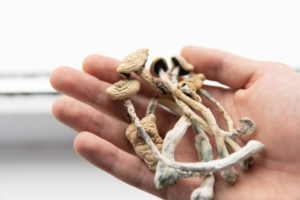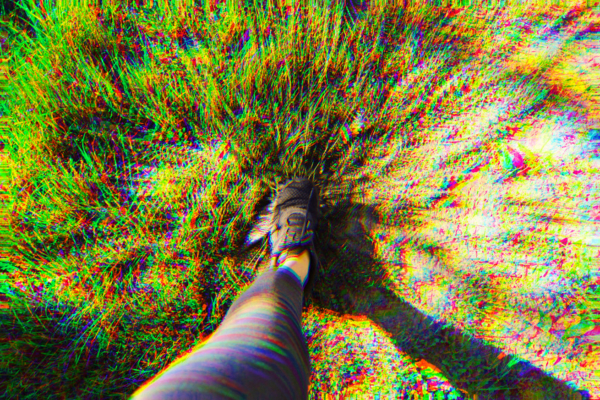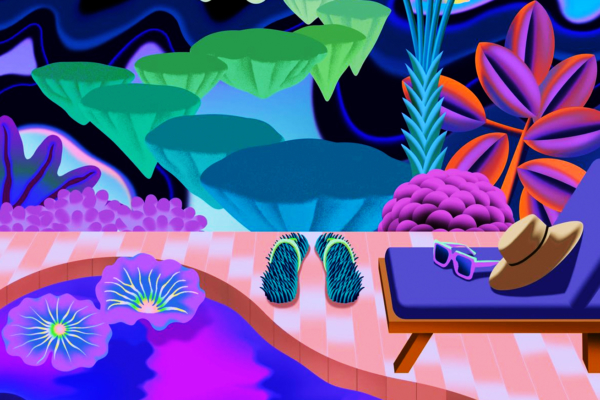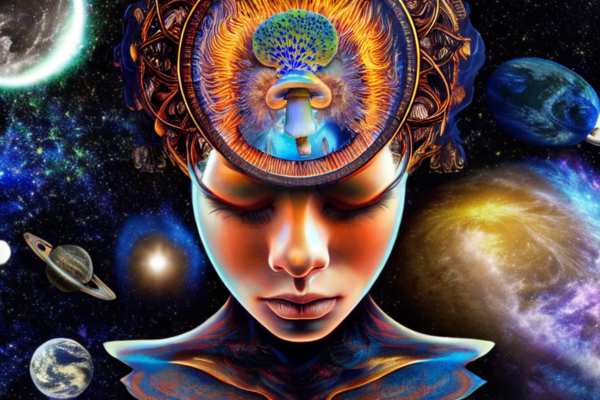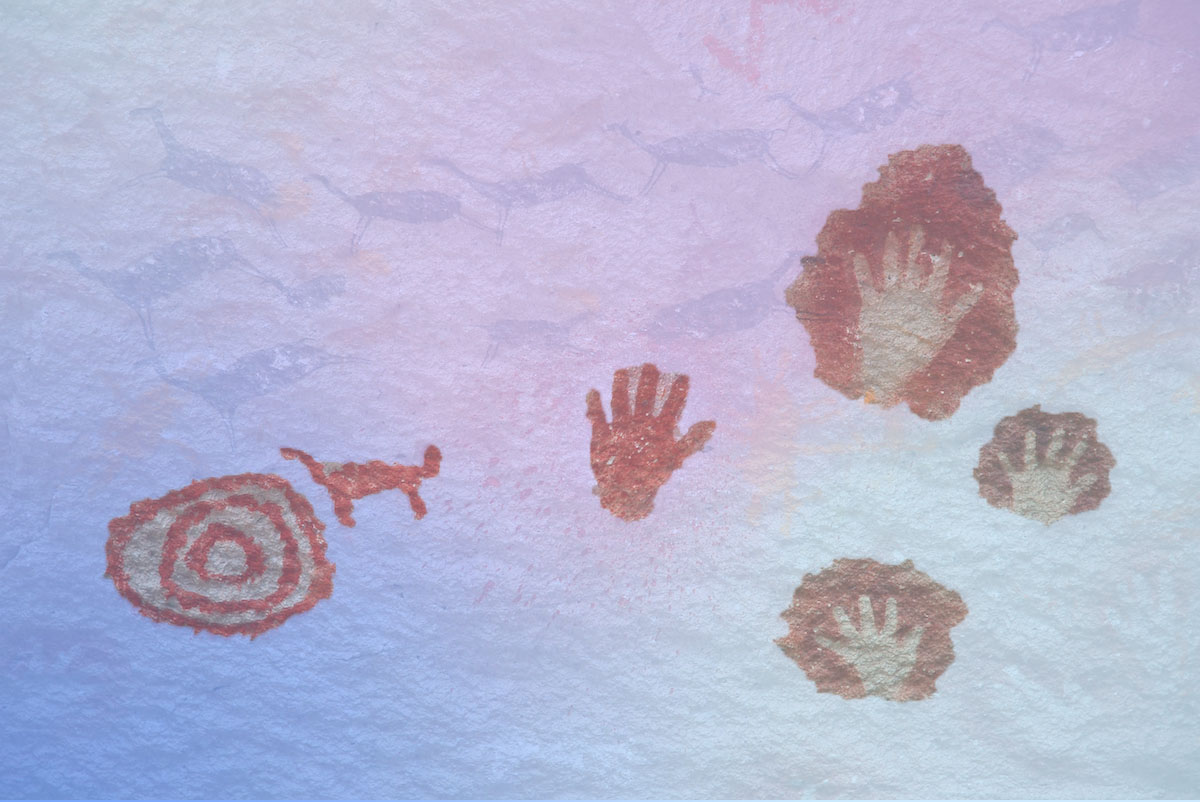
The consumption of psychedelic substances is as old a tradition as recorded human history itself. Perhaps, even older.
We know this because our ancient ancestors tell us so, through the only medium with which they could communicate to future generations: art. When examining the various prehistoric cave paintings and sculptures from around the world, a common theme can be found: mushrooms. Often these mushrooms are interacting with the human body, in a way that can only be described as psychedelic.
Enjoy these four examples of ancient mushroom art.
Tassili n’Ajjer, Algeria, cica 4700 BCE
Perhaps the most famous example of ancient mushroom art is this Algerian cave painting from circa 4700 BC. In it, we can clearly see mushrooms merging with a human-like entity. Its body is covered in a fractal-like pattern that will be familiar to those who have taken psychedelics before.
Made famous by Terrence McKenna in his book Food of the Gods: The Search for the Original Tree of Knowledge, this is one of the oldest known cave painting to feature mushrooms.
While time has made judging the message of the artist difficult, it doesn’t take much of a stretch of the imagination to posit that the mushrooms depicted are of the “magic” variety, and we are seeing an artistic rendition of their effects.

(Cave art in Tassili n’Ajjer SE Algeria, cica 4700 BC. On the right, you see what the artwork looks like today. On the left, a rendition by artist Kat Harrison for Food of the Gods: The Search for the Original Tree of Knowledge, of what was originally depicted.)
And while this figure certainly is the most eye catching piece of art, the Algerian cave was actually full of human-mushroom figures. Here are a couple more examples

Mesoamerican Mushroom-Human Stone Figurines, circa 3000 BCE
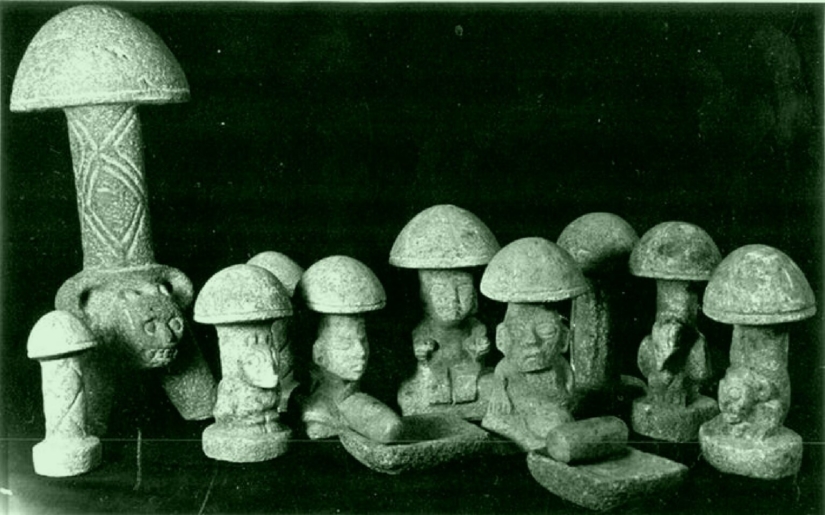
Moving across the world, to pre-Columbian Mesoamerica, stone figures dating back as far as 3000 BC can be found, depicting mushrooms merging with human heads.
The use of psychedelics in pre-Columbian Mesoamerica is thought to have been common, as evidence exists that cultures consumed not only psilocybin mushrooms, but also other psychedelics such Salvia divinorum and peyote.
In fact, archelogical evidence of the use of peyote in the region dates back 5000 years.
Again, though we can not be sure, the mixing of mushrooms with people in this artwork may suggest that the artists are depicting the power of certain types of mushrooms to change our realities when consumed.
Siberian Whale Hunter Cave Art, circa 1 CE
The theme of mushroom headed people seems to be near universal. Moving north to chilly Siberia, we find cave art made by nomadic whale hunters. These 2000 year old petroglyphs are in a region so far north that it can only be reached by helicopter. The closest town is Pevek, around 5,555 km east of Moscow.
Russian experts have dubbed the depicted figures as ‘fly agaric people’, named after the variety of psychedelic mushrooms found in the region. Though, again, since little is known about the people who created the art, any speculation on the artists’ message is just that, speculation.
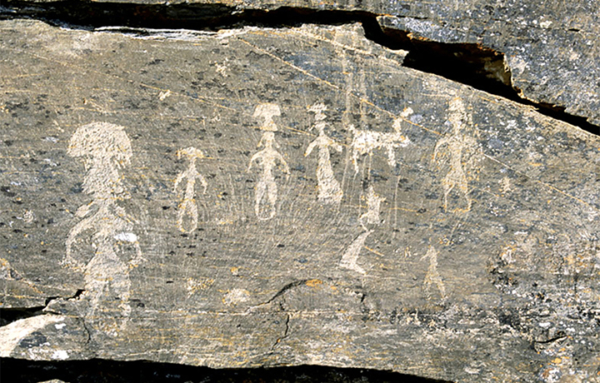
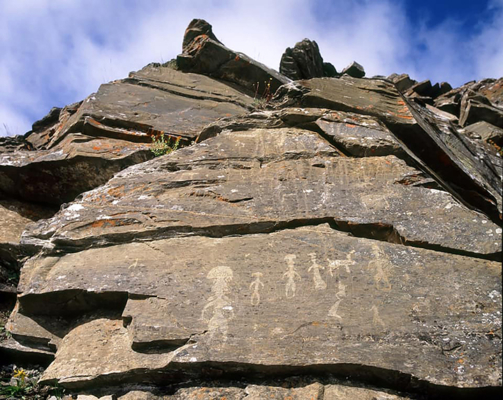
The Selva Pascuala Cave Mural in Spain, circa 4000 BCE
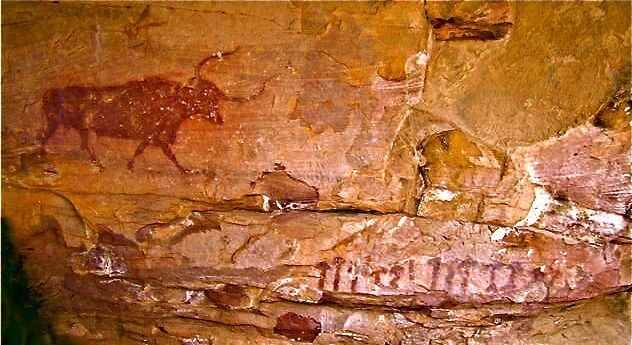
If you expand the search parameters to just depictions of mushrooms, you find many more examples. For example, the oldest discovered depiction of psilocybin mushrooms in Europe can be found in The Selva Pascuala cave mural in Spain. Painted around 4000 BC, the mushroom species is hypothesized to be psilocybe hispanica, as they grows near the region.
While there is no definitive evidence that the depicted mushrooms are of the psychedelic variety, once must assume that they held some significance, or else they would not have been recorded.
Further evidence, albeit circumstantial, that the mushrooms are in fact psilocybe hispanica is that they are depicted alongside a bull. This type of mushroom is known to grow in the dung of animals, which may be what the ancient artists are depicting.
Pinwheel Cave in Southern California, circa 1530-1890 CE
Finally, moving to California, we have the first ever evidence of psychedelic substances found alongside cave art. Though this example is much more recent than the above four, and it is not of mushrooms, it is being included as researchers in the Californian cave actually found residual psychedelic compounds.
Found in the crevices of the cave, researchers found chewed remnants of a flower known as the sacred datura flower, or Datura wrightii. This plant has psychedelic properties, and is thought to have been used widely by the people living in the region at the time.
In the cave, artwork of the flower can be found. According to researchers, this is the first “unambiguous evidence of the consumption of hallucinogens” by ancient peoples.

